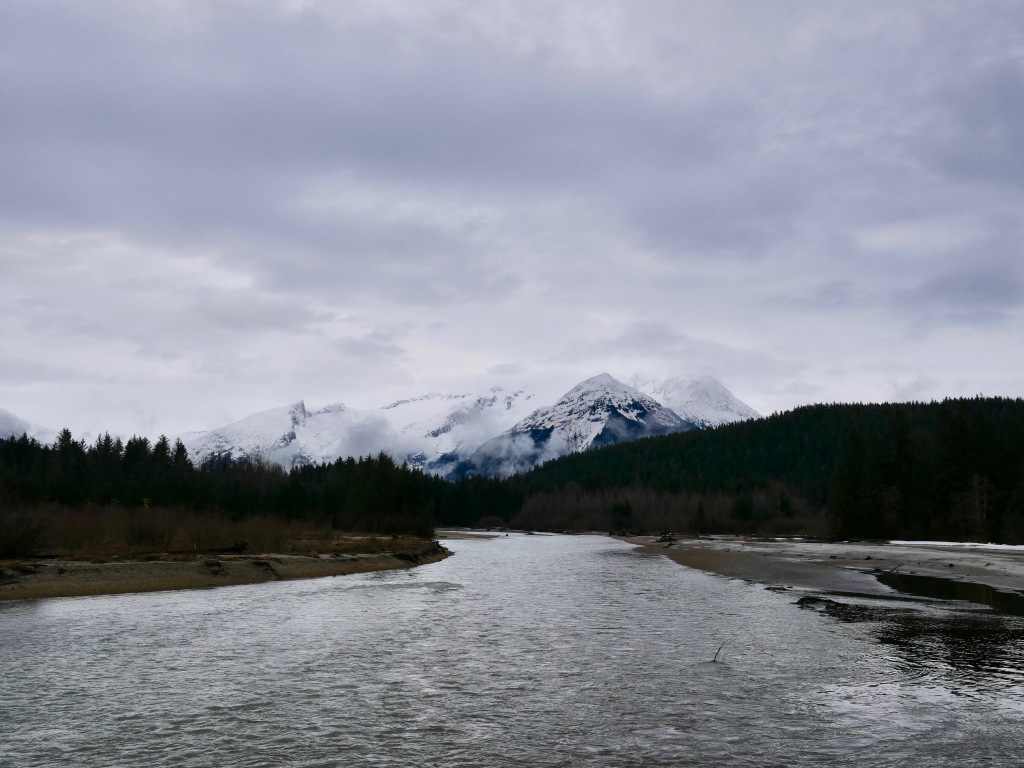
Wind-driven rain slammed into the car as we drove out to the northern end of Douglas Island. The rain but not the wind stopped when we arrived at the trailhead. When a few minutes down the trail we flushed a varied thrush from the trail. It landed on a nearby alder branch and gave the little dog and I a hard stare. That’s when I notice the total absence of bird song. On our last visit, varied thrush, like the one looking at us, filled the air with their blurry whistles. Wrens and kinglets added their signature songs. This morning, not one bird, or even a squirrel tried to be heard over the sound of the wind. I normally savor silence. It’s hard to come by, even in the rain forest. But this absence of bird song is chilling. Trying not to think about Carson’s Silent Spring, I follow Aki down the switchback trail that leads the beach.

At forest’s edge, we hear a thrush whistle and then the sweet song of a robin. The resident rafts of golden eye ducks and surf scoters work the offshore waters. Two eagles fly interlocking circles over Shaman Island. A song sparrow searches clumps of greening beach grass for food. Another sparrow sings out from inside an alder thicket.

Everything seems normal on the beach until a red breasted sap sucker lands on an exposed alder trunk. With jerky movements it moves up the tree, not stopping to hammer it with its powerful beak. It’s the first time I’ve seen any woodpecker land on an alder, let alone one so exposed.






































